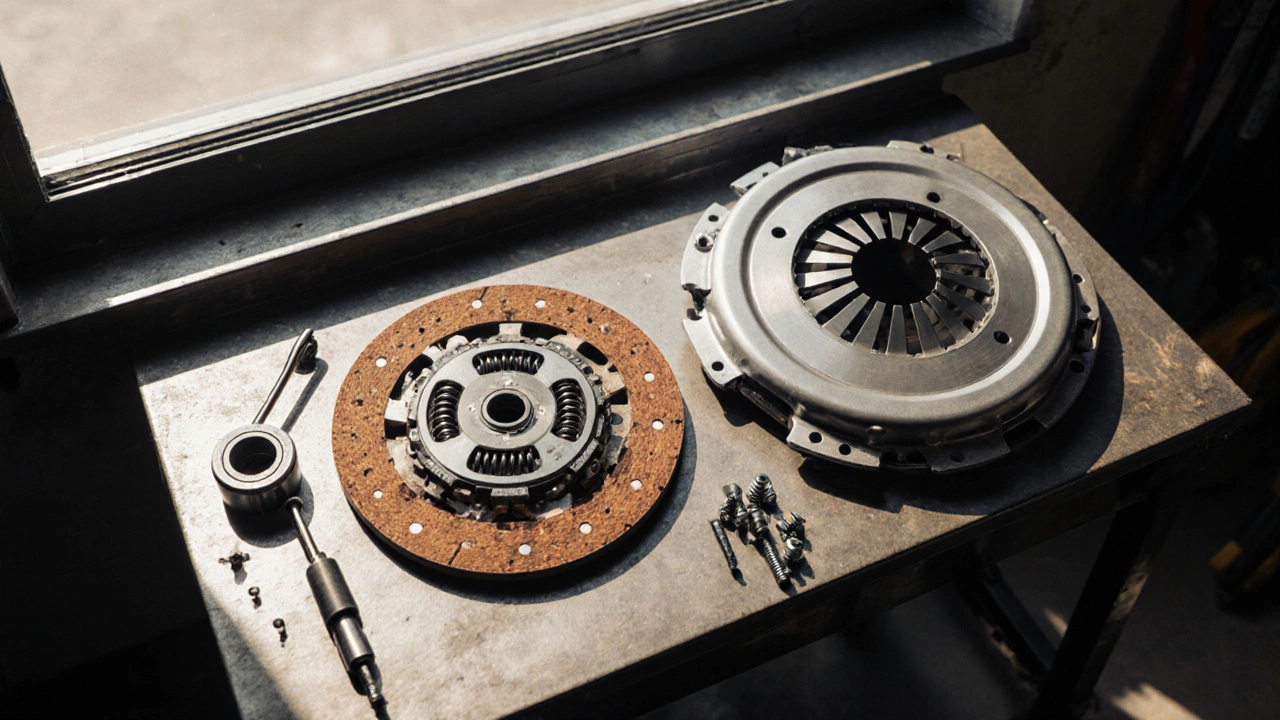
What’s Inside a 2‑Piece Clutch Kit? Complete Parts Breakdown
Learn exactly what components come in a 2 piece clutch kit, their functions, price range, installation steps, and when to choose it over a 3 piece kit.
When you press the clutch pedal, a small part called a release bearing, a component that applies pressure to the clutch pressure plate to disengage the engine from the transmission. Also known as a throw-out bearing, it slides along the input shaft and lets you shift gears smoothly. Without it, your clutch can’t disengage — meaning you’ll grind gears, stall, or worse, break something expensive. It’s one of those parts you never think about until it starts screaming.
Most release bearings last 80,000 to 100,000 miles, but heavy use, aggressive shifting, or a worn clutch fork can kill it way sooner. If you hear a grinding noise when you press the clutch — especially when the engine is running but the car is still — that’s your release bearing crying for help. It’s not the clutch disc, and it’s not the flywheel. It’s the bearing itself, worn out from friction and heat. You might also feel a vibration through the pedal or notice the clutch feels stiff or doesn’t return properly. These aren’t just annoyances; they’re warnings that the bearing is failing and could leave you stranded.
When a release bearing goes bad, it doesn’t just stop working — it starts damaging other parts. A broken bearing can chew up the clutch pressure plate, warp the fingers on the release fork, or even score the input shaft. That turns a simple £100 repair into a £500+ clutch job. And because the release bearing is inside the transmission housing, you can’t just replace it alone. Mechanics always swap it out when they’re already pulling the transmission for a clutch replacement. It’s cheaper, smarter, and safer to do both at once.
There’s no real way to check the release bearing without removing the transmission — so if you’re hearing strange noises or feeling odd clutch behavior, don’t wait. Get it diagnosed early. A mechanic can often confirm the issue by listening to the noise while pressing the pedal with the engine running and the car in neutral. If the noise goes away when you let the pedal up, it’s almost certainly the bearing. If it stays, you might have a bigger problem. Either way, you’re better off fixing it before it turns into a roadside emergency.
What you’ll find below are real-world guides from UK drivers who’ve dealt with clutch issues — from spotting early warning signs to understanding why a clutch job isn’t always as simple as swapping parts. Some posts show you how to tell if your clutch is failing before the bearing goes. Others explain why replacing the whole kit — pressure plate, disc, and bearing — is the only smart move. You’ll also see how driving habits, like riding the clutch or shifting too fast, can shorten the life of this tiny but vital part. These aren’t theory pieces. They’re fixes, tips, and lessons from people who’ve been there.

Learn exactly what components come in a 2 piece clutch kit, their functions, price range, installation steps, and when to choose it over a 3 piece kit.